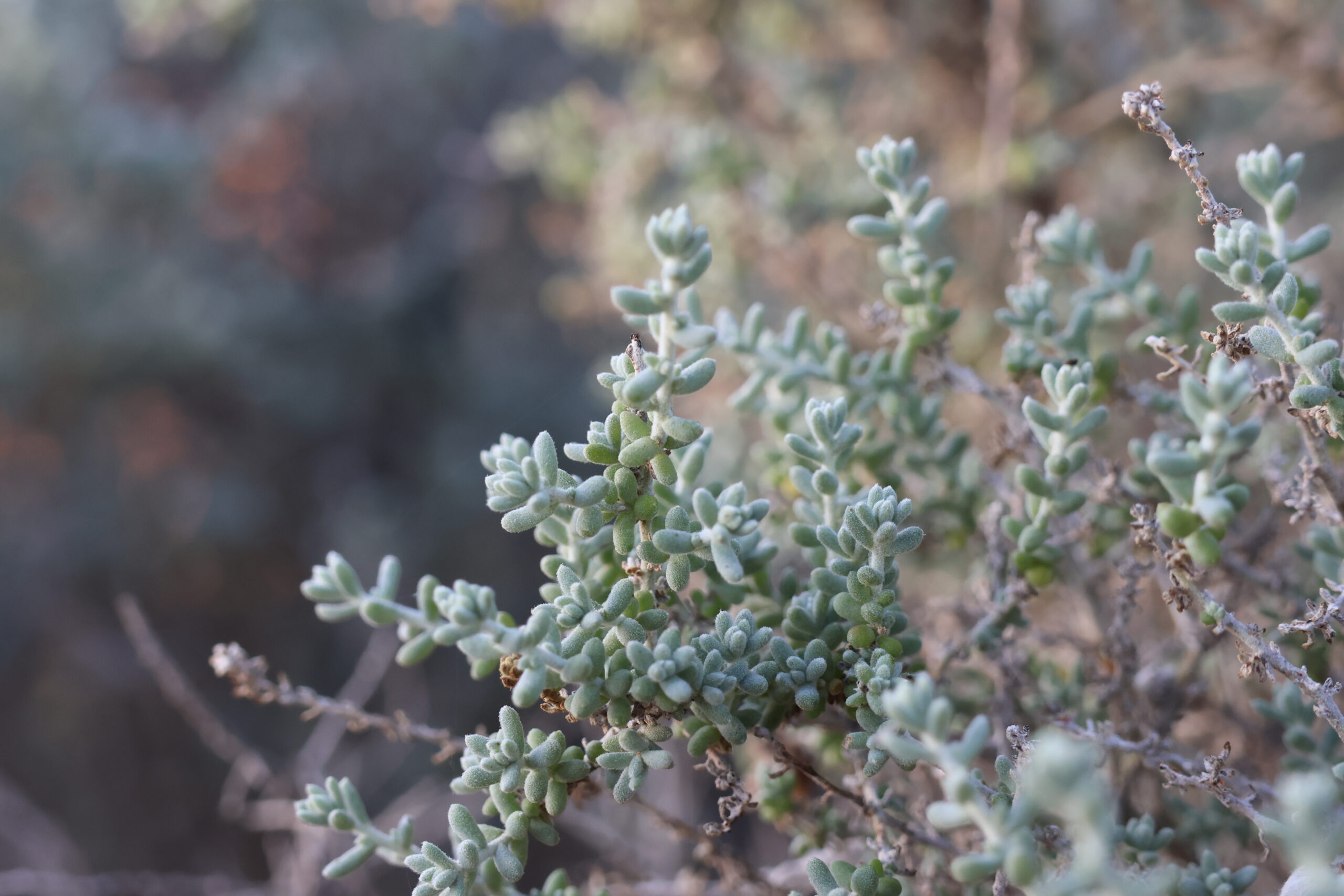The Commonwealth Environmental Water Holder’s (CEWH) Science Program funds the Flow Monitoring, Evaluation and Research (Flow–MER).
We would like to acknowledge the Kurnu-Baakandji Peoples, the Traditional Owners of the Warriku (Warrego) and Baaka (Darling) Rivers and surrounds. Thank you for sharing your Country and knowledge of the land, water and life with us. We pay respects to Elders past and present.
Traditional Paakantyi Language of the Kurnu-Baakandji Nation used in this article. (L. A. Hercus – Paakantyi Dictionary), additional to learnings from interacting with community members and the Junction of the Warriku (Warrego) and Baaka (Darling) Rivers Selected Areas Culture Advisor.
Author Tamara Kermode

The ruby saltbush (Enchylaena tomentosa) is a native low growing shrub with leaves similar to those of a quaint succulent (Figure 1). Native to most of the Australian continent with a preference for lots of sunlight (Figure 2), this little semi-woody plant grows small green to yellow developing berries which are reminiscent of tomatoes.
This little treasure is culturally significant as a food source for First Nations peoples. The berries can be eaten raw or soaked in water to make a sweet tea, and the leaves are edible. The Kurnu-Baakandji, Traditional Owners of the Toorale National Park and Conservation Area, often refer to the fruit as bush tomatoes.

Saltbush is a very hardy plant. It is drought and salt tolerant and reaches fruiting maturity after one year. It also attracts a host of critters, including birds, bees and insects, and lizards. Saltbush dots the landscape of Toorale quite densely as can be seen in Figure 2. As saltbush naturally grows in most areas of Australia, you can even keep one in your own garden, be it as a gap filler or hedges and screening, and with the added benefit of berries to eat.
Young plants want more regular water, and as they mature and grow their water requirements decrease. Saltbush, although growing on the floodplains will tend to grow in the higher regions, so that during floods their roots don’t stay moist for an extended time.
Managing water for the environment is a collective and collaborative effort, working in partnership with communities, private landholders, scientists and government agencies – these contributions are gratefully acknowledged.
We acknowledge the Traditional Owners of the land on which we live, work and play. We also pay our respects to Elders past, present and emerging.


